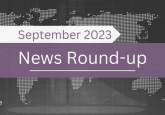Long-awaited ICH M14 draft guideline on pharmacoepidemiologic studies utilizing real-world data progresses

The ICH M14 draft guideline on pharmacoepidemiological studies using real-world data (RWD) has reached Step 2, opening for public consultation to establish standardized practices for medicine safety assessment.
The International Council for Harmonisation (ICH) has announced that the draft Guideline M14, focusing on the planning, design, and analysis of pharmacoepidemiologic studies using RWD for medicine safety assessment, reached Step 2 of the ICH process on May 21, 2024. The long-awaited guideline is now open for public consultation and review, signifying a crucial step in establishing standardized practices in this essential area of pharmaceutical research.
The ICH M14 guideline offers comprehensive recommendations for conducting pharmacoepidemiologic studies utilizing RWD to assess medication safety. Its objective is to harmonize international standards, ensuring consistent study conduct and reliable results to support regulatory decision-making. It streamlines the development and regulatory assessment of study protocols and reports, facilitating broader acceptance across health authorities. The scope encompasses pharmacoepidemiologic studies using RWD for post-marketing safety evaluation, excluding spontaneous report pharmacovigilance studies, randomized controlled trials, and patient experience data collection. While acknowledging emerging fields like pharmacogenomics and AI, the guideline does not address them in detail.
Key principles and processes
Anticipated for finalization as a Step 4 document by May 2025, the guideline will be implemented in local regional regulatory systems. It provides a structured framework to support the use of RWD for safety assessments, enhancing the reliability and acceptance of study findings.
The guideline outlines a step-wise approach for planning, designing, and analyzing observational (non-interventional) pharmacoepidemiologic studies that utilize fit-for-purpose data to assess the safety of medicines, including drugs, vaccines, and biological products. It recommends generating robust evidence for regulatory purposes by ensuring data reliability and relevance while applying sound pharmacoepidemiological methods. The guideline acknowledges data and study limitations while developing high-quality evidence to address regulatory questions regarding medicine safety. This evidence is suitable for submission, relying on the reliability and relevance of the data, as well as the appropriate application of pharmacoepidemiologic methods.
The guideline describes a stepwise, iterative process, as seen in Figure 1.

Figure 1. Framework for generating evidence using RWE. From ICH M14 General principles on plan, design, and analysis of pharmacoepidemiological studies that utilize real-world data for safety assessment of medicines.
Public consultation and next steps
The progression of the ICH M14 draft Guideline to Step 2 marks a significant step towards harmonizing approaches to pharmacoepidemiologic studies using real-world data. This harmonization is expected to foster international collaboration and improve the safety assessment of medicines. Stakeholders in the pharmaceutical industry, including researchers, regulators, and healthcare professionals, are encouraged to review the draft guideline and provide feedback during the consultation phase.
Want regular updates on the latest real-world evidence news straight to your inbox? Become a member on The Evidence Base® today>>>






